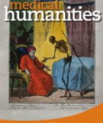Article published in World Archaeology
Directionality and axiality in the Bronze Age: crossregional landscape perspectives on ‘fire pit lines’ and other pitted connections
Abstract
A fireplace represents one of the most fundamental and time-transgressive gathering points for humans. However, when situated in pits that are organized in lines running sometimes hundreds of metres, fire pits represent a significant challenge in terms of interpretation, and may evidence a particular perception of space. This paper argues that in a Bronze Age context, pits associated with fire remains marked out directionality and axiality in the landscape as part of ceremonial events of a temporary nature. Adopting a landscape approach and going beyond regional and chronological borders, the authors argue that in northwestern Europe such events took place in relation to unbounded barrow landscapes in open spaces and could often be linked to the orchestration of funerary events. In some regions, the depositional activities evident in relation to these aligned pits have added significance. Furthermore, the authors argue that the aligning of fire pits is incompatible with divided or parcelled landscapes, thus challenging interpretations of pitted lines as territorial and field boundaries.
Article
Mette Løvschal & David Fontijn (2018): Directionality and axiality in the Bronze Age: crossregional landscape perspectives on ‘fire pit lines’ and other pitted connections. World Archaeology
Contact
Mette Løvschal, Associate Professor, Dept. of Archaeology and IMC



